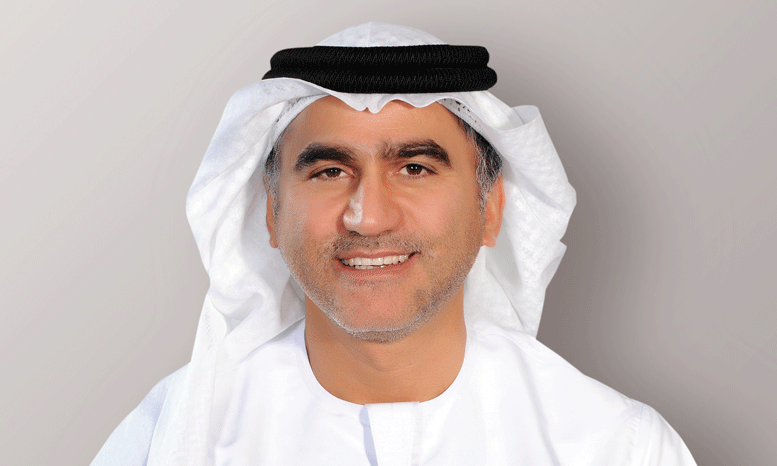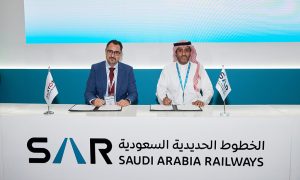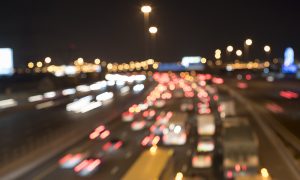Route 2020: Expo metro link on track in Dubai
Big Project ME speaks to Dubai’s Roads and Transport Authority to understand the impact Route 2020 will have on the city’s growth and development

June 29, 2016 was an important date in the history of Dubai, for it was the day when HH Sheikh Mohammed bin Rashid Al Maktoum, Vice-President and Prime Minister of the UAE and the Ruler of Dubai, announced the approval of the contract award for the Route 2020 project.
This announcement marked the beginning of planning and construction for the extension of Dubai Metro’s Red Line. Awarded to the Expolink Consortium, which consists of France’s Alstom Conglomerate, Spanish company Acciona and Turkish firm Gulermack, the $2.88 billion contract will link up the Dubai Expo 2020 site with the city’s existing metro services.
“The construction of the Route 2020 is envisioned in the Dubai 2021 Plan for achieving sustainable development, providing an improved world-class infrastructure and services. It also comes in implementation of the RTA Strategic Plan 2021 aimed at providing mass transit systems including metro and tramlines, buses and marine transit services, towards realising RTA’s vision of safe and smooth transport for all,” said HE Mattar Al Tayer, director-general and chairman of the board of executive directors of the RTA, at the time of the announcement.
Alstom will supply 50 trains – 15 for the Expo and 35 to upgrade the Dubai Metro. It will also cater to the electromechanical works for the project. The Thales Group will provide the technical systems, while Acciona and Gulermack will attend to the civil works, Al Tayer added.
With construction on the project scheduled to start in the final quarter of the year, the focus now turns to the challenges associated with its delivery, as well as the impact it will have on Dubai in future. While it is being built with Expo 2020 in mind, the route itself will have a major impact in shaping Dubai’s growth over the coming years.
It is expected that 25 million visitors will visit Dubai during the six months of the Expo, and that Route 2020 will have a ridership of 125,000 riders per day in 2020, RTA studies say. By 2030, that number is expected to rise to 275,000, with studies also revealing that about 35,000 riders will use the Expo Station per day during weekdays, with 47,000 riders over the weekend. In total, this number accounts for about 20% of the projected total number of daily visitors to the Expo, the RTA says.
Keeping all this in mind, AbdulMohsin Ibrahim Younes, CEO of the Rail Agency at the RTA, tells Big Project ME that while Route 2020 will be vital for the Expo, Dubai’s expansion and growth means it is set to play a crucial part in the overall master plan for Dubai’s growth and expansion.
“Route 2020 connects the Red Line from Sheikh Zayed Road to the Expo 2020 site near Al Maktoum Airport. In addition to the Expo 2020, the new line will serve vital existing and future developments along its route, with a view to achieving project sustainability,” he explains.
“The project’s catchment areas include vital urban development where the total population amounts to 270,000 people. The major developments within the Route 2020 catchment area include The Gardens, Discovery Gardens, Al Furjan, Jumeriah Golf Estates and Dubai Investment Park.”

AbdulMohsin Ibrahim Younes, CEO of the Rail Agency at the RTA
Starting off at Nakheel Harbour and Tower Station on the Red Line, the route will extend for 15km. 11.8km will be a viaduct, and 3.2km will be underground track. In total, the project will encompass seven stations, including a transfer station with the Red Line. There will be two elevated stations and two underground stations as well.
Speaking at the project announcement, Al Tayer explained that the RTA has mapped out a master plan for roads and transport projects to serve Expo 2020, with Route 2020 a prominent part. “The RTA has coordinated with all developers and government service providers of concern with the planned metro route, in order to ensure that Route 2020 will provide support to vital areas served by the project over the short and long terms.”
Younes points out that during the feasibility study for the project, the RTA worked with all concerned stakeholders to also ensure that proposed station locations were integrated properly within their urban settings and that they met the mobility demands within each particular location.
This attention to detail also extended to the release of the tender. The RTA has put in place governance and assessment principles for the Route 2020 project, to ensure transparency and achieve the best results. These include clear-cut objectives and standards for the technical and financial assessment process during the tendering phase, says Younes. These standards cover several perimeters.
“The assessment process was based on the following: the project construction programme; the integration and linking of the systems with the existing lines of Dubai Metro; the station designs and modern project construction techniques, and finally, the rail technologies and systems that will be introduced to the project.”
With the tender attracting 10 consortiums of major firms that specialise in the construction of metro systems, Younes says the bids were assessed through specialist committees, teams and international consultants, with 100 specialists from the RTA and the project consultant involved.
“Five of them had submitted technical and financial proposals, and negotiations were made with two consortiums in the final stage. The process concluded with the awarding of the project contract to Expolink Consortium.”
Regarding the funding of the Route 2020 project, the RTA says it is working in coordination with the Finance Department of Dubai Government, and that it has asked consortiums to submit elective finance offers during the tender submission stage. The Finance Department will then select the most suitable finance model to achieve the present and future financial sustainability of the project.
Route 2020 is clearly viewed as a crucial part of the Dubai 2021 Plan, which aims to see sustainable development with world-class infrastructure and services. It is also part of the RTA’s Strategic Plan 2021, which aims to provide mass transit systems, including the metro and Dubai Tram, buses and marine transit services.
Therefore, it is crucial that all Dubai’s other transport networks and systems link up with the new route in an efficient and sustainable manner, says Nasser Abu Shehab, CEO of Strategy and Corporate Governance at the RTA, telling Big Project ME that accommodating the numbers predicted for the Expo alone is no easy feat.
“Expo 2020 is anticipated to attract about 25 million visitors, 70% of whom would be coming from abroad during the duration of Expo from October 2020 to April 2021. The maximum number of visitors of Expo per day is expected to touch 300,000 visitors,” he says.

Nasser Abu Shehab, CEO of Strategy and Corporate Governance at the RTA
Accommodating the massive numbers of visitors will obviously require thorough planning to ensure the smooth mobility and flow of people between the exhibition site and places of residence. To achieve this, Abu Shehab says that Dubai will draw upon its rich legacy of successful planning and managing major events, such as the hosting of the IMF and World Bank meetings, Dubai Airshow, Dubai Shopping Festival and the New Year’s celebrations attended by around 1.7 million people assembled in a small area beside the Burj Khalifa.
“As part of its preparations for hosting Expo 2020 in a style befitting the profile of Dubai, the RTA has developed a master plan for roads and transport services in support of Expo. The plan includes multiple transit options for lifting visitors from their places of residence to the Expo site – such as the metro, buses and taxis.
“Considering environmental sustainability is one of the key objectives of Expo 2020, the plan advocates the use of mass transit means, which are expected to account for 51% of the total number of trips from and to Expo. To achieve this, key measures have to be initiated, such as extending the Red Line of the Dubai Metro. In addition, more than 17 stations will be running Expo buses across Dubai, and these stations will be properly distributed to serve Expo visitors. Visitors will first head to those stations and from there they will be lifted by more than 500 coaches.
“Coordination is in hand with other emirates to implement similar strategies for deploying a number of buses in each emirate to commute Expo visitors.”
As part of the plan, some 30,000 parking spots will be provided within the perimeters of the site to serve visitors driving to the Expo site. From there, they will commute by bus. Furthermore, the Expo will also be served by 3,000 taxis, which will require suitable parking areas and facilities.
“The plan also envisages the construction of road networks and main interchanges to ease the accessibility to the site. The aim is to offer high flexibility in the entry and exit movements through multi-tier interchanges, which will allow the smooth mobility for all transit means needed to serve the Expo.”
As such, Shehab reveals that projects currently underway will help streamline the two-way traffic movement of Expo 2020, with a ‘radical overhaul’ of the Traffic Control Centre and the establishment of a Unified Control Centre chief among them.
“The plan has taken into account utilising all the stated transport facilities and modes beyond Expo 2020 to serve the Dubai emirate and the economic and urban development projects, which will be constructed within and surrounding the Expo 2020 site,” he concludes.

























